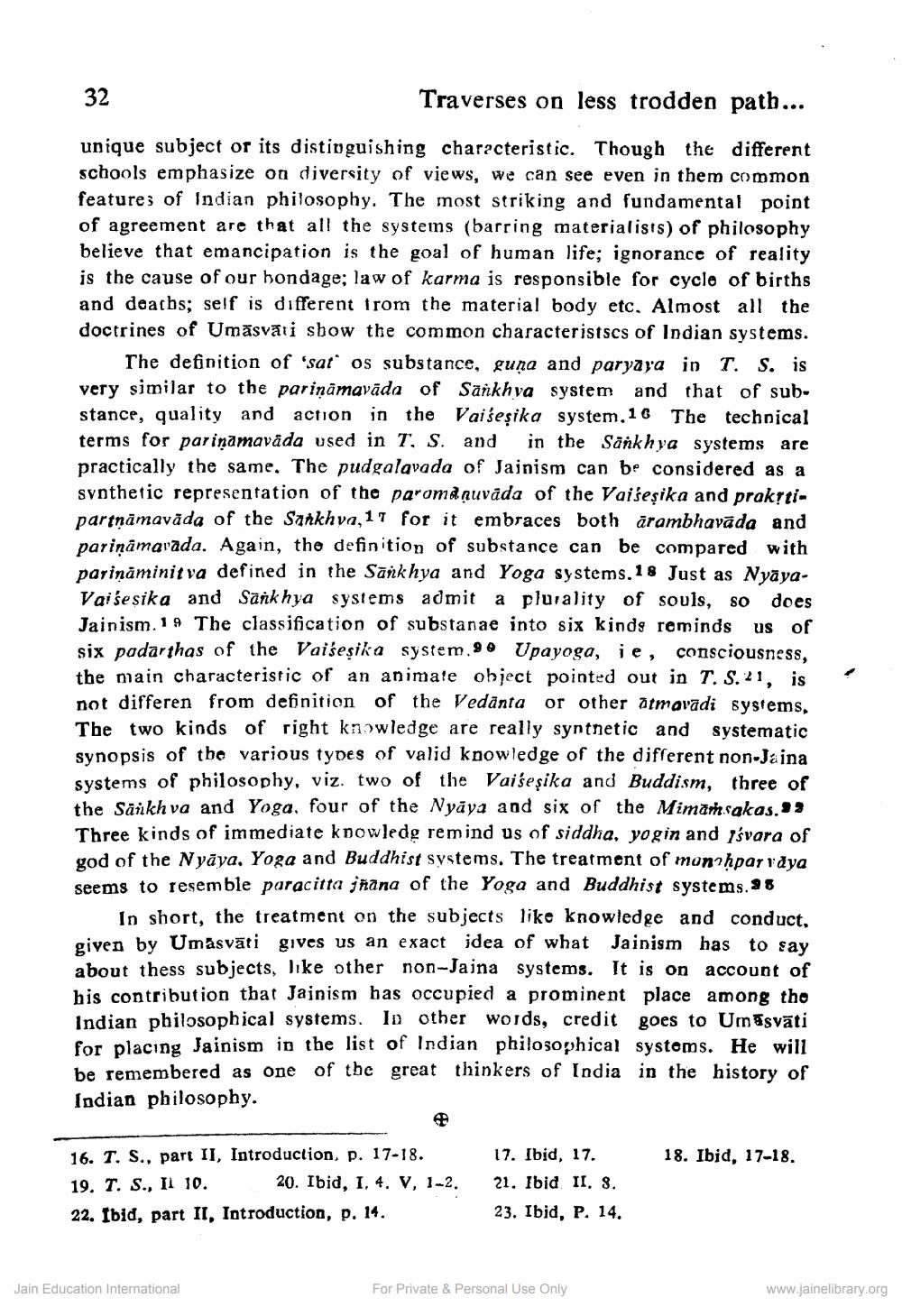________________
32
Traverses on less trodden path...
unique subject or its distinguishing characteristic. Though the different schools emphasize on diversity of views, we can see even in them common features of Indian philosophy. The most striking and fundamental point of agreement are that all the systems (barring materialists) of philosophy believe that emancipation is the goal of human life; ignorance of reality is the cause of our bondage; law of karma is responsible for cycle of births and dearbs; self is different from the material body etc. Almost all the doctrines of Umāsvāti show the common characteristses of Indian systems.
The definition of 'sato os substance, guna and paryaya in T. S. is very similar to the pariņāmavāda of Sankhva system and that of substance, quality and action in the Vaiseșika system.16 The technical terms for pariņāmavāda used in T, S. and in the Sänkhya systems are practically the same. The pudgalavada of Jainism can be considered as a synthetic representation of the parama nuvada of the Vaiseșika and prakstipartnāmavāda of the Sankhva, 17 for it embraces both arambhavāda and parinâmarada. Again, the definition of substance can be compared with pariņāminit va defined in the Sankhya and Yoga systems. 18 Just as NyāyaVaisesika and Sankhya systems admit a plurality of souls, so does Jainism. 19 The classification of substanae into six kinds reminds us of six padarthas of the Vaiseșika system.99 Upayoga, ie, consciousness, the main characteristic of an animale object pointed out in T. S.21, is not differen from definition of the Vedānta or other atmavadi systems, The two kinds of right knowledge are really synthetic and systematic synopsis of the various types of valid knowledge of the different non-Jaina systems of philosophy, viz. two of the Vaiseșika and Buddism, three of the Säikh va and Yoga, four of the Nyāya and six of the Mimar sakas. Three kinds of immediate knowledg remind us of siddha, yogin and yśvara of god of the Nyāya, Yoga and Buddhist systems. The treatment of monahpar vdya seems to resemble paracitta jnana of the Yoga and Buddhist systems. 98
In short, the treatment on the subjects like knowledge and conduct, given by Umāsvāti gives us an exact idea of what Jainism has to say about thess subjects, like other non-Jaina systems. It is on account of his contribution that Jainism has occupied a prominent place among the Indian philosophical systems. In other words, credit goes to Umsväti for placing Jainism in the list of Indian philosophical systems. He will be remembered as one of the great thinkers of India in the history of Indian philosophy.
18. Ibid, 17-18.
16. T. S., part II, Introduction, p. 17-18. 19. T. S., Il 10. 20. Ibid, I, 4. V, 1-2. 22. Ibid, part II, Introduction, p. 14.
17. Ibid, 17. 21. Ibid. II. 8. 23. Ibid, P. 14.
Jain Education International
For Private & Personal Use Only
www.jainelibrary.org




